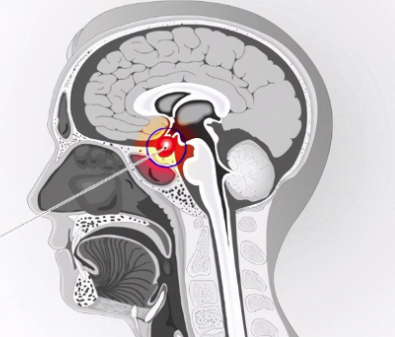Blood in the stool is a word that seems to carry a mysterious and disturbing colour. When you finish a relaxing or stressful toileting session, you may look back and find that the white toilet bowl is hiding an eye-popping ‘red’ colour. At that moment, your heartbeat seems to speed up, as if you have been startled by a sudden alarm. This ‘red alarm’ is no joke. It's like a detective inside your body, quietly sending you important information. Maybe it's your intestines telling you that they're a bit ‘on fire’ lately and you need to regulate your diet; maybe it's a small polyp reminding you that it's beginning to quietly take over your territory; or maybe it's a warning of a more serious disease, telling you that you need to see your doctor right away.
This can be due to bleeding from the anus or rectum, but it can also be a problem in other parts of the digestive tract. The colour of blood in the stool can vary from bright red to dark brown, depending on the location and extent of the bleeding. Generally, bright red blood indicates that the bleeding is from a lower location, such as the rectum or anus, while darker-coloured blood may come from a higher location, such as the stomach or small intestine.
There are many possible causes of blood in the stool, ranging from simple haemorrhoids to more serious bowel conditions. One of the most common causes is haemorrhoids, which are like sitting on a hard bench for long periods, causing the blood vessels around the anus to swell and rupture, usually accompanied by pain and discomfort. Another common cause is anal fissures, a condition usually caused by excessive straining during bowel movements or hard, dry stools, where bleeding is usually bright red and accompanied by severe pain. In addition to this, peptic ulcers can also cause blood in the stool, especially gastric or duodenal ulcers. In this case, blood in the stool usually appears as dark or tarry stools. These chronic inflammatory bowel diseases can make the intestinal mucosa fragile and prone to bleeding.

More serious are intestinal polyps or tumours, which are uncommon but can cause blood in the stool. If blood in the stool persists or is accompanied by other symptoms, such as weight loss or fatigue, you need to seek medical attention as soon as possible. Not only can polyps or tumours cause bleeding, but they can also affect bowel function and require professional medical assessment and treatment. Through early detection and treatment, the condition can be effectively managed and further deterioration prevented. Whichever the cause, blood in stool is a signal from the body that we need to pay attention and deal with the underlying health problem. If blood in stool occurs, it is advisable to seek prompt medical attention for the necessary tests and treatment. Maintaining good lifestyle habits and diet can also be effective in preventing many of the common problems that cause blood in the stool.
Firstly, if you notice blood in your stool, do not panic. Depending on the colour of the blood in your stool and the symptoms, try to determine the possible causes. If it is occasional, with small amounts of blood in the stool and there are no other symptoms, it could be haemorrhoids or a minor anal fissure. In addition, avoid sitting for long periods, especially on hard seats, and try using soft cushions to reduce anal pressure. Finally, warm water sitz baths can relieve anal discomfort and promote healing. With these methods, you can effectively relieve mild symptoms of blood in the stool.

However, if the blood in the stool is large in volume, dark in colour or accompanied by other uncomfortable symptoms such as abdominal pain, weight loss and anaemia, immediate medical attention is required. The doctor will determine the exact cause of the bleeding through physical examination, anoscopy or colonoscopy and treat accordingly.





